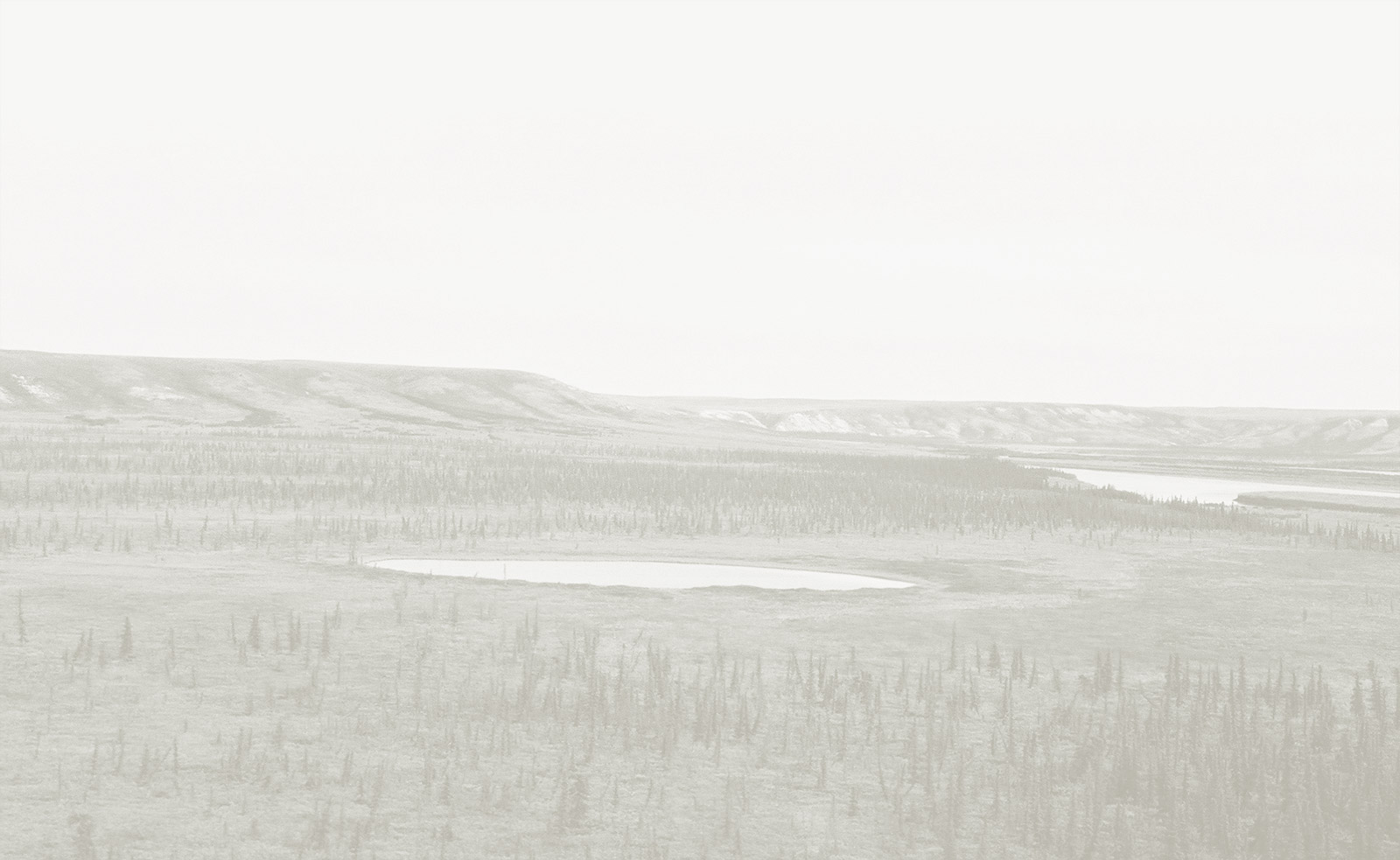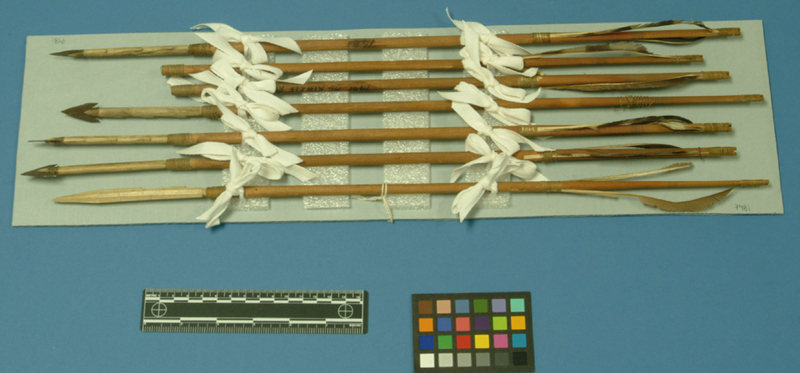


Qaryuq
Complete arrows as well as separate arrowheads are present in the MacFarlane Collection. The arrow shafts are made from a single piece of spruce, and typically are 60 to 70 cm. long. Most have been stained with red ochre. The shafts are round in cross section, except near the notch for the bowstring where they are slightly flattened to provide a better grip for the fingers. Fleching consists of two split and trimmed feathers attached with sinew lashing. Several types of arrowheads were used, depending on the game that was hunted. Some of the ochre markings on arrow shafts may have been owner's marks, and some arrowheads are likewise marked with notches and incised lines that might have been used to identify their owner.
“Arrows colored red were considered more effective weapons than uncoloured ones.” (Vilhjalmur Stefansson, 1914, Anthropological Papers of the American Museum of Natural History, vol. 14: p. 344)
"They have seven varieties of arrows each for a definite purpose and named accordingly." ('The Amerindians of the Canadian Northwest in the 19th Century, as seen by Émile Petitot. Volume 1: The Tchiglit Eskimos', edited by Donat Savoie, Department of Indian Affairs and Northern Development, 1971: p. 155).